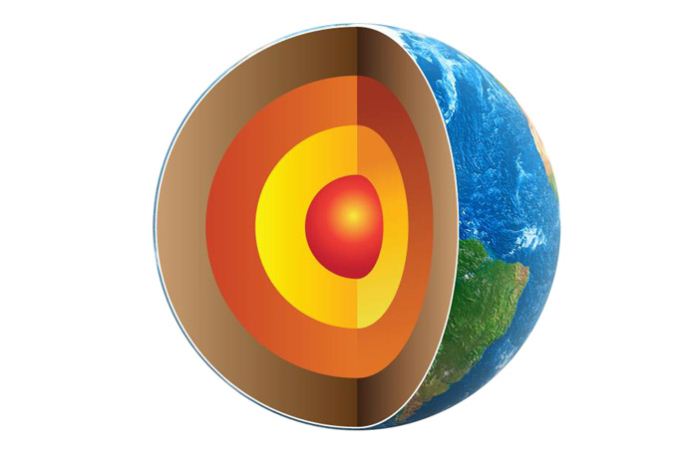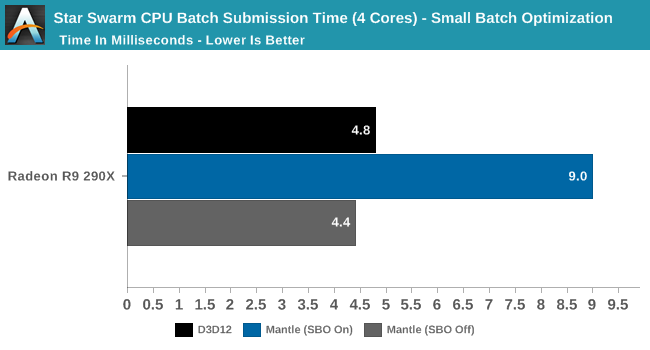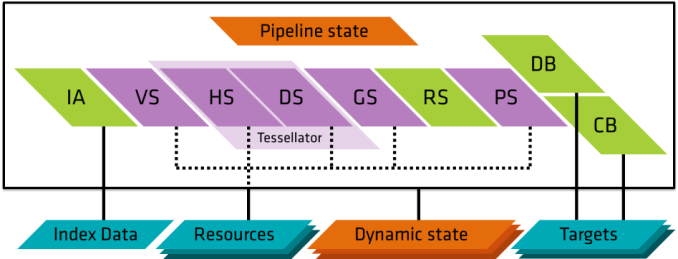AMD Lays Out Future of Mantle: Changing Direction In Face of DX12 and glNext
by Ryan Smith on March 2, 2015 10:45 PM EST
Much has been made over the advent of low-level graphics APIs over the last year, with APIs based on this concept having sprouted up on a number of platforms in a very short period of time. For game developers this has changed the API landscape dramatically in the last couple of years, and it’s no surprise that as a result API news has been centered on the annual Game Developers Conference. With the 2015 conference taking place this week, we’re going to hear a lot more about it in the run-up to the release of DirectX 12 and other APIs.
Kicking things off this week is AMD, who is going first with an update on Mantle, their in-house low-level API. The first announced of the low-level APIs and so far limited to AMD’s GCN’s architecture, there has been quite a bit of pondering over the future of the API in light of the more recent developments of DirectX 12 and glNext. AMD in turn is seeking to answer these questions first, before Microsoft and Khronos take the stage later this week for their own announcements.
In a news post on AMD’s gaming website, AMD has announced that due to the progress on DX12 and glNext, the company is changing direction on the API. The API will be sticking around, but AMD’s earlier plans have partially changed. As originally planned, AMD is transitioning Mantle application development from a closed beta to a (quasi) released product – via the release of a programming guide and API reference this month – however AMD’s broader plans to also release a Mantle SDK to allow full access, particularly allowing iit to be implemented on other hardware, has been shelved. In place of that AMD is refocusing Mantle on being a “graphics innovation platform” to develop new technologies.
As far as “Mantle 1.0” is concerned, AMD is acknowledging at this point that Mantle’s greatest benefits – reduced CPU usage due to low-level command buffer submission – is something that DX12 and glNext can do just as well, negating the need for Mantle in this context. For AMD this is still something of a win because it has led to Microsoft and Khronos implementing the core ideas of Mantle in the first place, but it also means that Mantle would be relegated to a third wheel. As a result AMD is shifting focus, and advising developers looking to tap Mantle for its draw call benefits (and other features also found in DX12/glNext) to just use those forthcoming APIs instead.

Mantle’s new focus in turn is going to be a testbed for future graphics API development. Along with releasing the specifications for “Mantle 1.0”, AMD will essentially keep the closed beta program open for the continued development of Mantle, building it in conjunction with a limited number of partners in a fashion similar to how Mantle has been developed so far.
Thie biggest change here is that any plans to make Mantle open have been put on hold for the moment with the cancelation of the Mantle SDK. With Mantle going back into development and made redundant by DX12/glNext, AMD has canned what was from the start the hardest to develop/least likely to occur API feature, keeping it proprietary (at least for now) for future development. Which is not to say that AMD has given up on their “open” ideals entirely though, as the company is promising to deliver more information on their long-term plans for the API on the 5th, including their future plans for openness.
As for what happens from here, we will have to see what AMD announces later this week. AMD’s announcement is essentially in two parts: today’s disclosure on the status of Mantle, and a further announcement on the 5th. It’s quite likely that AMD already has their future Mantle features in mind, and will want to discuss those after the DX12 and glNext disclosures.
Finally, from a consumer perspective Mantle won’t be going anywhere. Mantle remains in AMD’s drivers and Mantle applications continue to work, and for that matter there are still more Mantle enabled games to come (pretty much anything Frostbite, for a start). How many more games beyond 2015 though – basically anything post-DX12 – remains to be seen, as developers capable of targeting Mantle will almost certainly want to target DX12 as well as soon as it’s ready.
Update 03/03: To add some further context to AMD's announcement, we have the announcement of Vulkan (aka glNext). In short Mantle is being used as a building block for Vulkan, making Vulkan a derivative of Mantle. So although Mantle proper goes back under wraps at AMD, "Mantle 1.0" continues on in an evolved form as Vulkan.
Source: AMD











94 Comments
View All Comments
lefty2 - Tuesday, March 3, 2015 - link
Yeah, nice rant. It'll take about 5 years before everyone switches to Win10.FlushedBubblyJock - Friday, March 27, 2015 - link
It's free for one year, so expect quite a swamping.Shadowmaster625 - Tuesday, March 3, 2015 - link
AMD has complete control over the entire software stck due to their ability to craft a cpu and a gpu that can communicate with each other any way they want. They need to stop screwing around and deliver something that offers an order of magnitude improvement in performance, otherwise no one will bother to use mantle. The fact that microsoft can come along and write something just as good and have it work for nvidia too is telling.FlushedBubblyJock - Friday, March 27, 2015 - link
Bite your tongue ! Are you accusing the holy of holies AMD !??!!AMD would never, and I mean never, make something proprietary !
Please go read the AMD Gamer's Manifesto ten times and go to bed with no verdetrol.
I don't like nVidia's practices.
CPUGPUGURU - Tuesday, March 3, 2015 - link
Nvidia was working with Microsoft on DX12 while debt laden AMD was wasting resources marketing redundant mantle and paying developers to use mantle. AMD needed mantle because its CPUs were and still are IPC cripple. Alpha mantle was never open, AMD was playing the open card knowing it would never be open. AMD pumped up the mantle band wagon while developers jumped off knowing DX12 is on the way.AMD all talk no walk, its been that way with every watt wasting CPU/APU and re-branded GPU for years now.
So sorry but its so true.
gruffi - Wednesday, March 4, 2015 - link
No, it's wrong. Nvidia never worked on the DX12 API. AMD did. Nvidia fangirls seem to be really desperate to make up stories considering all the bad Nvidia media lately.D. Lister - Wednesday, March 4, 2015 - link
So calling someone a girl is an insult from your point of view? You must be one of the smartest people on the internet. Like AMD, do you? Makes perfect sense, considering . Why not buy a lot of AMD stock while you're at it, lol.CPUGPUGURU - Wednesday, March 4, 2015 - link
In addition to Nvidia’s new Maxwell GPU having top-of-the-line performance and power efficiency, it has another feature that will probably make a lot more difference in the real world: It’s the first GPU to offer full support for Microsoft’s upcoming DirectX 12 and Direct3D 12 graphics APIs. According to Microsoft, it has worked with Nvidia engineers in a “zero-latency environment” for several months to get DX12 support baked into Maxwell and graphics drivers. Even more importantly, Microsoft then worked with Epic to get DirectX 12 support baked into Unreal Engine 4, and to build a tech demo of Fable Legends that uses DX12. Back in March, when Microsoft officially unveiled DirectX 12 (and D3D 12), it surprised a lot of people by proclaiming that most modern Nvidia (Fermi, Kepler, and Maxwell).CPUGPUGURU - Wednesday, March 4, 2015 - link
Read LearnMicrosoft officially unveiled DirectX 12 (and D3D 12), it surprised a lot of people by proclaiming that most modern Nvidia (Fermi, Kepler, and Maxwell) support DX12. One of the surprise announcements at the show is that Nvidia will support DX12 on every Fermi, Kepler, and Maxwell-class GPU. That means nearly every GTX 400, 500, and 600 series card will be supported.
At GDC 2014, Microsoft and Nvidia (NO AMD Here) have taken the lid off DirectX 12 — the new API that promises to deliver low-level, Mantle-like latencies with vastly improved performance and superior hardware utilization compared to DX11. Even better, DirectX 12 (and D3D 12) are backwards compatible with virtually every single GPU from the GTX 400 to the present day.
Interestingly, AMD isn’t necessarily following suit — the company has indicated that it will support DX12 on all GCN-based hardware.
FlushedBubblyJock - Friday, March 27, 2015 - link
WOW - really ?" That means nearly every GTX 400, 500, and 600 series card will be supported."
OMG...
rofl amd is so hosed !